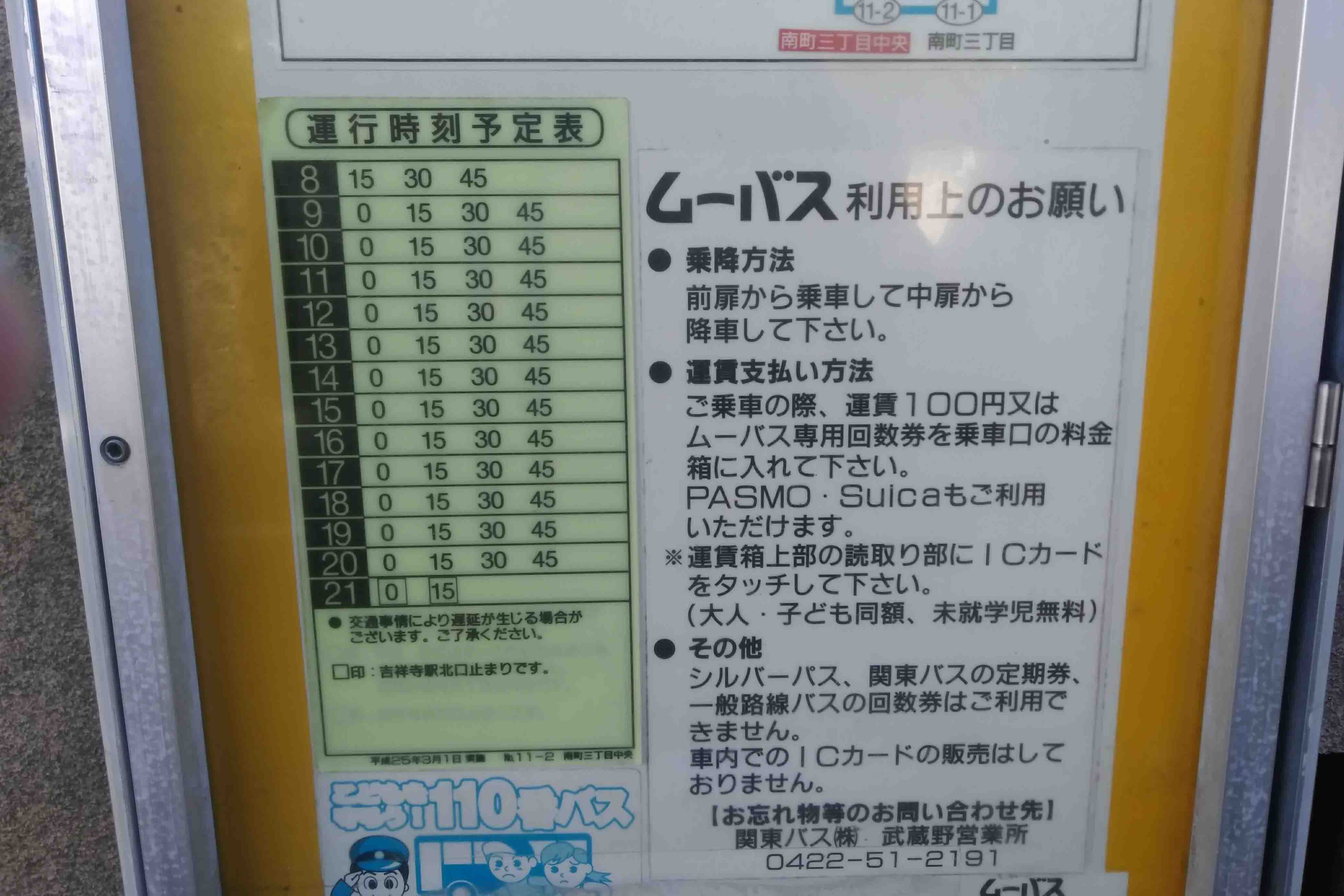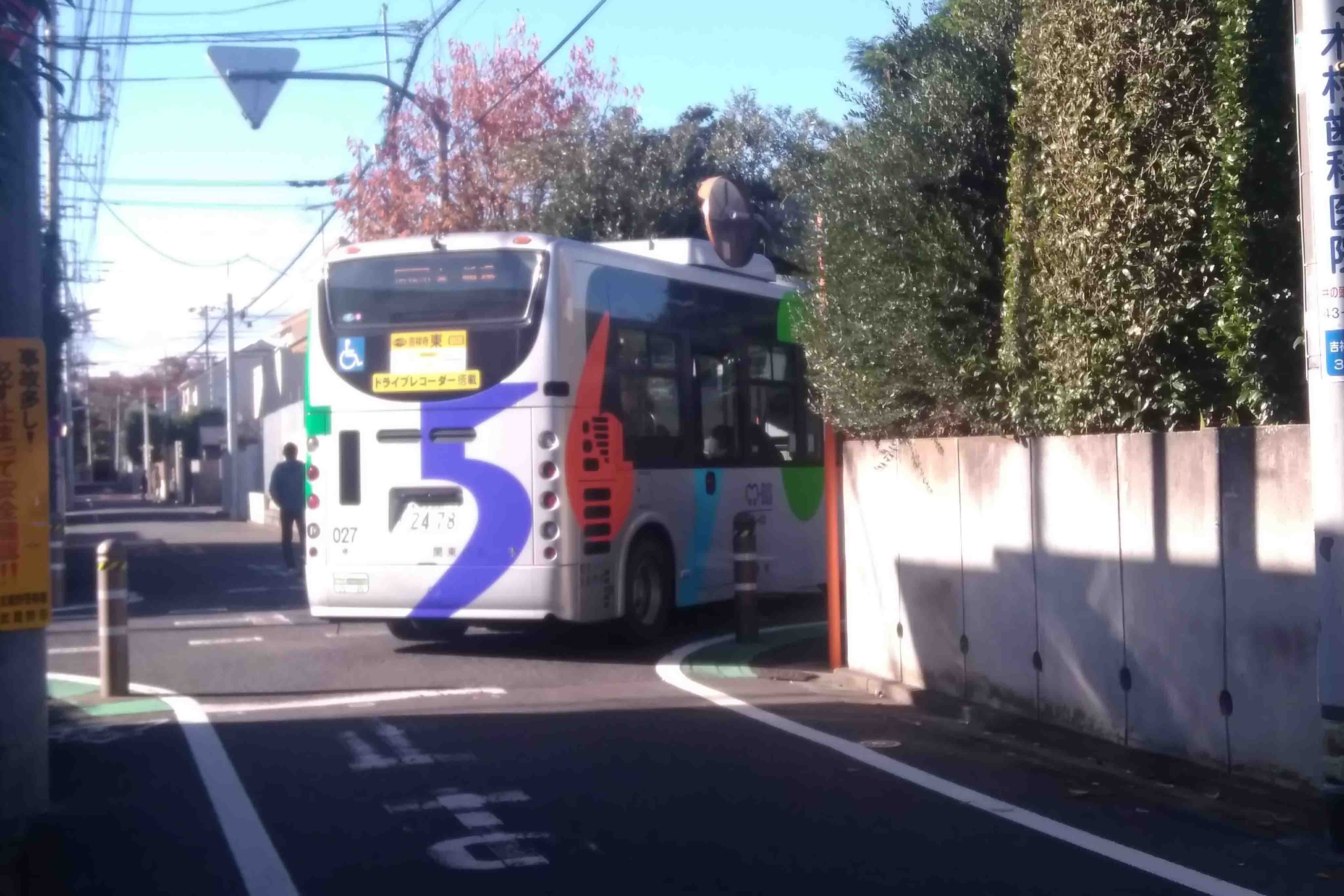Mu-bus
At the Urban regions of Tokyo such as Musashino, Mitaka and Koganei, a community bus called “Mu-bus” is operated. “Mu-bus” is a community bus which has the longest history in Japan.
This community bus uses a small size “Micro Bus”, and runs around these regions by a 100 yen flat fare.
Previously, at the Musashino, Mitaka and Koganei regions, there are only few bus lines which runs inside the town, and the usage of the public transportation was low for the local people. So, several residents of the region lettered the city and the bus operators, to improve the convenience of bus lines. As a result, the “Mu-bus”, which is the Japan’s first “community bus”, the administration and the bus company code-sharing was started running.
As I mentioned before, “Mu-bus” is the first “Community bus” in Japan, and it become the pioneer of the “Community bus” successors widely spread in Japan. Also, "Mu-bus" is known for being an unusual success as a community bus. Boarding is good with a lot of railway population, low fare of 100 yen, convenient route and so on.
Field survey report
at Kichijoji station
I visited Kichijoji Station where Mu-bus is actually operated.
It was distinguished that the interval between each bus stop was short compared with normal bus.
A interesting service “Park and bus ride” was served at this region. By parking your car at a special parking lot called “Mu-Park”, scanning your IC boarding pass to the parking meter and riding on the “Mu-bus” or the Kanto bus, you could get a 200 yen discount of the parking fees.
|
|
|
|
|
|
|
|
|
|
Ride on

|
|
A time table of Mu-bus On the route I got on, it is operated four times per hour. |
I got on Kichijoji Eastern Circulation (No. 1 Route) from Kichijoji Station and headed to "11-2 Namacho 3-chome Central" bus stop.
There were 4 busses operated per hour. It was apparent that the usage of the bus was good, because many people were getting on and off at each bus stop, and there are even standing passengers because of the crowding bus. Also, I noticed that the bus was not only used by the elderly and the students, but also by all generations.
I took a route which was appling the of the small “Micro bus”, which is easy to turn around at curves, and operated a narrow residential street.
In addition,a bus stop number was given to each bus stop, and it was easy-to-understand guide by line color and number.
After getting off at the "11-2 Minamicho 3-Chome Central" bus stop, I headed to Inokashira Park on foot and arrived home from Inokashira Park Station.

|

|
|
|
|
Consideration
Because the interval between the bus stops is short, I heard that there is less burden on the elderly's legs.
The "Park and Ride" system gets on a private car to the parking lot affiliated with Mu-bus, and after getting at the private car, you can get on the bus from the bus stop in front of the parking lot and you can go to Kichijoji station. So, it is thought that if you own a private car it is a convenient system with less burden for users.
Also, because the users can receive a discount of 200 yen by this system, I thought that various people regardless of generations would actively use this service, which resulted in the possibility of leading to stable management.
In addition, despite the fact that the size of the community bus is often smaller than the bus buses, we have also learned that there is enough room to manage the "Movers" to partner with the parking lot and provide full-fledged service.
However, I felt strongly that the profitable operation of Mu-bus was able because it runs in a densely populated area in the urban areas of Tokyo. Frequency, price and very easy to use environment were in place, but I think that it is difficult to spread this convenience to the whole country in the form of a community bus.
Therefore, instead of introducing the system as it is just referring to "Mu-bus", I think that it is necessary to extend the community bus nationwide while optimizing the fare and the operation frequency.
Impression
By visiting and actually getting in the area where "Mu-bus" is actually traveling, the famous "Mu-bus" as Japan's first community bus and one of the few successful community buses is a well-regarded managerial condition such as the high population I made use of it and realized that ingenuity such as getting into a residential area far from the station where it is thought that there are many users is done. In the depopulated areas around the country, I thought that other local governments would like to utilize various means of transportation, including community buses, to improve the quality of life for local residents.
